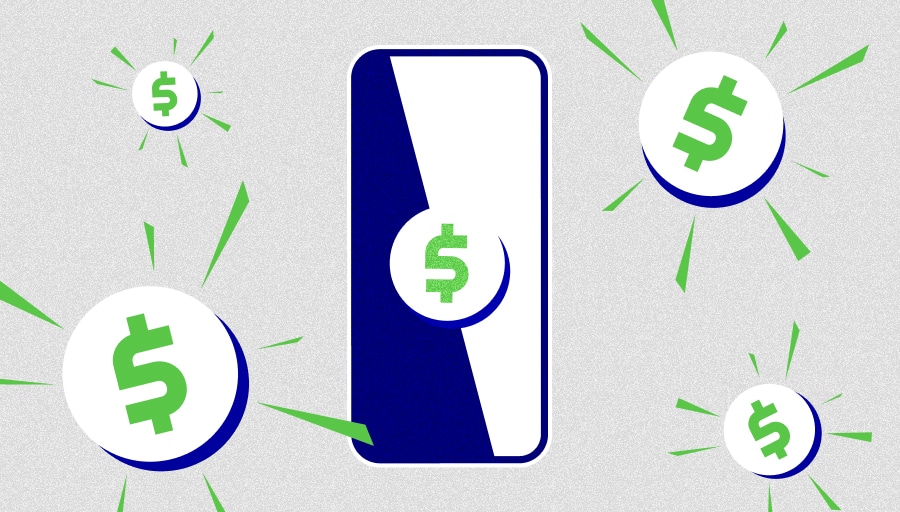If you’ve tried to buy a house in recent years, you know the market is, shall we say, a bit temperamental. As it has become less necessary to live near Silicon Valley and Wall Street, a new real estate trend has emerged. Affordable houses in places like rural Texas, Iowa, and Michigan have turned into “migration magnets.” And it turns out when more buyers flood a small town market with offers, competition heats up.
Increased competition has led potential buyers to offer tens of thousands of dollars over asking prices for their own homestead. It turns out a similar dynamic exists in programmatic in-app advertising.
Why have multiple demand sources?
Whether it’s a battle for craftsman architecture in Austin or interstitial placement in the hottest new mobile game, when demand is opened up to more competition, prices can take off. In adtech, tapping into more demand sources leads to higher CPM and fill rates, which can in turn lead to greater average revenue per daily active user (ARPDAU) and lifetime value (LTV) — more on that below. In other words, publishers should open the field to as many quality demand sources as possible.
Further, unlocking multiple demand sources isn’t just in service of jacking up publisher and developer revenue. There is symbiosis in this ecosystem.
Everyone benefits from multiple demand sources
When more demand sources are tapped, advertisers benefit too. In the right setup, they gain the opportunity to win more placements than they might have otherwise.
When all advertisers are given an equal shot to rise to the top, the opportunity for them to reach target audiences greatly increases. An open field with multiple quality demand sources leads to greater reach, greater efficiency, and greater efficacy — everything an advertiser should be after.
The saying goes, competition breeds innovation. In the right setup where publishers maximize revenue and advertisers are able to deliver great relevance, app users win too. And happy users are more likely to spend their money when presented with top notch experiences.
Let the computers do the work
We keep mentioning “the right setup,” but what exactly does that mean? First, a brief history lesson: In the beginning and for many years, the waterfall has been the workhorse ad mediation solution. In simple terms, publishers use waterfalls to check in with multiple ad networks, one by one and in order of preference, to sell their supply. The order in which ad networks are tapped is usually based on past performance but it really can be sorted any way a publisher pleases.
The issue with waterfalls is that the advertiser willing to pay the most for ad placement may never actually have the chance to do so. If another advertiser higher up in the waterfall happens to win the placement first, the one willing to pay more will never surface.
That’s where the unified auction shines. In a unified auction, rather than prioritizing specific ad networks based on what happened in the past, auction requests are sent to every network simultaneously for real-time bidding (RTB). In the end, the highest paying qualifying bid wins. Simple as that. This model originated on the web as header bidding but has matured to the point that it has begun to replace the waterfall, and considering new challenges presented by Apple’s App Tracking Transparency (ATT), it’s not a moment too late.
Consider that 61% of publishers say that a switch to in-app bidding for ad mediation leads to increased ARPDAU, while 33 percent see an increase in LTV after adding in-app advertising (IAA) to an in-app purchase (IAP) model. Meanwhile, in-game ad revenue is expected to hit $63 billion by 2026, a 14.8% five-year CAGR. That’s significant, and publishers need to be positioning themselves now to compete long term.
Playables: The ad format of choice
Twenty-eight percent of US agency professionals have found playable ads to be the most effective in-app ad format. Check out more on playable ads here.
There’s also a lot less effort and upkeep required on a publisher’s part to monetize through unified auctions. Fewer steps in the bidding ad serving process allow ads to load faster. In fact, bidding can reduce ad latency by 38% to 88% compared to the waterfall. It really comes down to choosing an ad mediation platform and multiple quality demand sources to compete for supply.
Open the flood gates of competition
IAA has become critical in mobile game monetization. Consider that 70% of top publishers in North America adopted in-app header bidding. Finding the right mediation platform and demand partners is key to building a healthy, thriving ecosystem.
Fortunately, Chartboost has you covered. Our Chartboost Mediation platform offers access to more than 33 of the top in-app networks, including Google bidding, Meta Audience Network, Mintegral, Vungle, AdColony, our very own Chartboost network, and more. Chartboost Mediation also provides one-click A/B testing, a dedicated support team, and exceptional data auction transparency.
Ready to get started with the easiest, most efficient path toward managing multiple demand sources and maximizing your monetization strategy? Learn more about Chartboost Mediation today.



